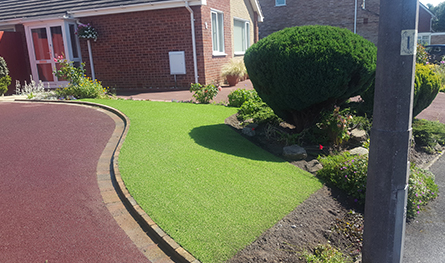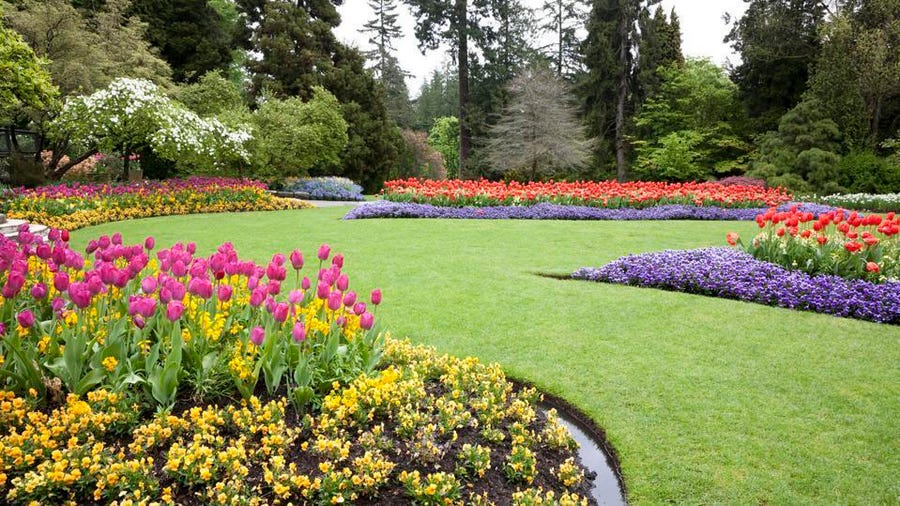Artificial grass offers a beautiful, low-maintenance solution for homeowners looking to enhance their outdoor spaces. Whether you’re tired of constant lawn upkeep or want a green space year-round, artificial grass can be a game-changer. However, achieving a flawless installation requires the expertise of professional fitters. In this ultimate guide, we’ll walk you through everything you need to know when hiring artificial grass fitters for your home, from understanding the process to choosing the right fitters for the job.
1. Why Hire Professional Artificial Grass Fitters?
While DIY artificial grass installation might seem like a cost-effective choice, there are several reasons why hiring professionals is worth the investment:
- Expert Installation: Professional fitters have the skills and experience needed to properly prepare the ground, level the surface, and lay the turf for a flawless, long-lasting finish.
- Time-Saving: Installing artificial grass can be time-consuming and labor-intensive. Hiring professionals means the job will be done efficiently, saving you time and effort.
- Durability and Longevity: Proper installation ensures your artificial lawn remains intact for years. A poorly installed lawn may suffer from uneven surfaces, drainage issues, or seam separation, all of which can lead to costly repairs.
2. How to Choose the Right Artificial Grass Fitters
Selecting the right artificial grass fitters for your project is crucial to ensure a successful installation. Here are some factors to consider when hiring professionals:
a) Experience and Expertise
Look for fitters with a proven track record of successful artificial grass installations. Experienced fitters are more likely to understand the unique needs of your project and offer high-quality results.
- Ask for Portfolio or References: Reputable fitters will have a portfolio of completed projects or can provide references from previous customers. This will give you an idea of their work quality and reliability.
- Industry Knowledge: Ensure the fitters are familiar with the latest installation techniques, materials, and tools for a professional result.
b) Licensing and Insurance
Before hiring any fitter, verify that they are fully licensed and insured. This ensures they operate legally and can cover any potential damages or accidents during the installation process.
- Insurance: Proper insurance protects you in case of any damage to your property during installation or if any issues arise post-installation.
- Licensing: Licensing requirements vary by region, but hiring a licensed professional guarantees they meet local standards for quality and safety.
c) Free Quotes and Estimates
Reputable artificial grass fitters will offer free quotes or estimates for your project. A professional fitter should visit your home to assess the site and provide an accurate estimate based on the size of the area, the type of artificial grass, and the complexity of the installation.
- Get Multiple Quotes: It’s a good idea to get quotes from multiple fitters to compare prices and services. Avoid choosing fitters solely based on price; instead, consider value, quality, and reputation.
- Clear Breakdown of Costs: Ensure the quote includes a detailed breakdown of costs, such as the price of materials, labor, and any additional services (e.g., site preparation or drainage work).
d) Specialization in Artificial Grass
While many landscapers can lay turf, not all are specialists in artificial grass installation. Make sure the fitters you hire are experienced specifically with artificial turf, as this requires a different set of skills compared to natural grass installations.
3. What to Expect During the Installation Process
Once you’ve chosen the right fitters, it’s important to understand the installation process to ensure everything goes smoothly. Here’s an overview of what to expect:
a) Site Survey and Preparation
Before installation begins, the fitters will visit your property to assess the area. They will discuss your preferences, recommend the best type of artificial grass, and evaluate factors such as:
- Ground Leveling: The ground must be properly leveled to ensure a smooth and even surface for the artificial grass.
- Clearance of Debris: Any existing grass, weeds, rocks, or debris must be cleared to make way for the new turf.
- Drainage Requirements: A proper drainage system is essential to avoid water buildup, which can damage the turf. Fitters will ensure that the surface is graded correctly to allow for efficient drainage.
b) Installation of Artificial Grass
Once the area is prepared, the fitters will begin laying the artificial grass. This process typically includes:
- Cutting and Fitting the Turf: The turf is cut to size and fitted to the specific shape of your garden. Fitters will make sure the grass lines up perfectly and seams are hidden.
- Securing the Turf: The artificial grass is then securely fixed using appropriate adhesives or nails, depending on the surface type.
- Trimming Edges: Fitters will trim the edges of the grass to fit the contours of your garden and create a clean, seamless finish.
c) Finishing Touches
After the artificial grass is laid, the fitters will take care of the finishing touches:
- Weed Barrier: They will often install a weed barrier beneath the turf to prevent unwanted growth from underneath.
- Brushing and Sanding: The grass will be brushed to ensure the fibers stand upright, giving the lawn a natural look. Sand or other infills may be applied to add weight and stability.
- Final Inspection: Once the installation is complete, fitters will inspect the area for any imperfections and ensure everything is secure and visually appealing.
-1920w.jpg)
4. Maintaining Your Artificial Lawn
While artificial grass requires far less maintenance than natural grass, it’s still essential to perform basic upkeep to ensure it remains in top condition.
- Cleaning: Regularly clean your artificial grass by brushing off debris, leaves, or dirt. A leaf blower or a gentle broom can help maintain the grass’s appearance.
- Occasional Rinsing: Rinse the turf with a hose to remove dust or dirt. This will also help prevent the buildup of bacteria or odors.
- Fixing Damages: If any seams or areas of the grass become damaged, contact the fitters for repairs. Timely fixes can prevent further damage and extend the life of your artificial lawn.
5. Cost Considerations
The cost of artificial grass installation depends on various factors, including the size of your space, the quality of the turf, and the complexity of the installation. Here’s a breakdown of what might affect the cost:
- Size of the Area: Larger lawns require more turf and more time to install, which increases the overall cost.
- Type of Turf: Premium artificial grass can cost more upfront but often lasts longer and provides a more realistic appearance.
- Site Preparation: If your ground requires extensive leveling or drainage work, the cost may increase.
- Additional Services: If you require features like edging, decorative elements, or enhanced drainage, expect additional charges.
6. Conclusion
Hiring professional artificial grass fitters is the best way to ensure a smooth, high-quality installation that enhances the beauty and functionality of your outdoor space. By choosing experienced fitters who specialize in artificial grass, you can avoid costly mistakes, enjoy a hassle-free lawn, and save time on ongoing maintenance.
With the right fitters handling the installation, your artificial lawn will look stunning year-round, providing a low-maintenance, beautiful outdoor space that you can enjoy without the stress of traditional lawn care. Take the time to research fitters, compare quotes, and ask for references to make the best decision for your home.



